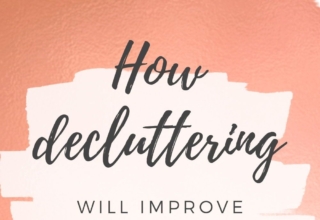
There are uncertainties in our pet’s life. No matter how careful or responsible we try to be, our pups still find socks to eat, and our kittens still climb and fall from shelves. It is our duty to take care of them and get them back to health. We adore our dogs, and with pet insurance, we can provide for them without having to worry about the cost. There is no way to foresee the future; you can’t know when or how your pets will become ill or how much it will cost. Unexpected veterinarian costs are covered by pet insurance.
The purpose of pet insurance is to shield you from unforeseen expenses like vet bills. Learn how pet insurance functions, what to look for, how much it can cost, and some other factors to think about if you’re considering purchasing a coverage.
Table of Contents
The Purpose of Pet Insurance
When a pet is hurt or unwell, these plans can assist you in paying for veterinarian care and other medical costs. The prices, coverage, and exclusions of the various insurance might differ greatly. The most comprehensive insurance also provide coverage for dental expenses, pet theft loss, and third-party liability in the event that a pet causes injury or damage to people or property.
What Is Covered by Pet Insurance?
The following are the common items that a pet insurance, dog insurance, or cat insurance plan will cover:
- Mishaps and accidents, such as ACL tears, sprains, and poisonings
- Some examples of chronic illnesses include allergies, arthritic disorders, and skin issues.
- Common illnesses including ear infections, nausea, and diarrhea; • major diseases like cancer, diabetes, and heart disease
- Tests and diagnostic techniques include X-rays, MRIs, CT scans, blood tests, and ultrasounds. Hereditary conditions include blood disorders, eye abnormalities, and hip dysplasia.
- Examples of procedures include surgery, hospital stays, nursing care, endoscopies, and chemotherapy.
- The vaccinations, neutering, and lea/heartworm treatments that are part of your pet’s health and wellness procedures
- Laser treatment, chiropractic care, and acupuncture are also covered by pet insurance, dog insurance, and cat insurance.
- Behavioral therapy is used to address issues including destructive chewing, excessive barking, and aggression.
- Some pet insurance plans also cover pet dentistry, which takes care of problems including dental disorders and traumas (such as gum disease or injuries such as broken teeth).
Is Pet Insurance Necessary?
If you’re not sure whether pet insurance is worthwhile, think about how you would handle an unforeseen expense. Depending on the procedure and your location, costs might range from hundreds to thousands of pounds. You must weigh this against the price of your premiums and the possibility that you may file a claim.
Need for Dog Insurance for Senior Dogs
Aging is a normal process, not an illness. As they age, dogs experience both physical and mental changes, just like people do. Most elderly dogs get gray muzzles, and you can see a general deterioration in the quality of their coat. Their skin also becomes less elastic, which results in hair loss and white hairs. Over time, their eyes may also develop a pearly, hazy, or blue appearance.
Older dogs often acquire fat rather than muscle. Their daily caloric needs may decrease as they become older; they may not need as many calories as they did when they were younger. A portion of this is biological, and a portion of this results from more sleep and less exercise.
Need for Cat Insurance for Senior Cats
Senior cats—those over the age of 10—are more prone to have a number of ailments as they age, as well as a steady decline in the efficiency of their bodily systems. Due to deteriorated cartilage and joints in older cats, they frequently experience arthritis and joint discomfort. Around one in every 200 cats has diabetes mellitus, which is strongly connected with obesity and is more prevalent in older cats and cats over the age of seven. If you see your cat losing weight, call your doctor right away so they can diagnose the likely reason and provide the best course of action. Weight loss is a fairly common but non-specific indication of disease in older cats.
Conclusion
The easiest way to think about pet insurance is that it is meant to assist in paying for expensive and unexpected medical expenses. Owners who have pet insurance can avoid having to choose between providing a cherished animal with lifesaving care, which typically costs at least $3,000, and a painful financial hardship. The ability to make the best medical decision for your pet without financial concerns playing a role in your decision to get pet insurance, dog insurance or cat insurance is typically the deciding factor.















